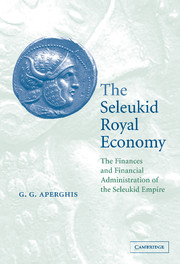
I’m reading a fascinating little book on the Seleukid Royal Economy, that is filled with world building gems. Greg would have totally dug this. A few interesting takeaways:
The Lunar Heartlands has about the population of Seleukid Mesopotamia, Northern Syria, and Cilicia.
Mesopotamia was far more urbanized than we give credit for – settlement surveys suggest that about half the population lived in cities and towns of over 2,000 people.
Irrigation and intensive cultivation enabled Mesopotamia to have very high yields of barley. Compared to the approximately 1 hectare per person of Mediterranean dry-farming conditions, probably 0.5 hectares would suffice in Mesopotamia or along the Oos. But since the additional labor to cultivate a given plot of land was only somewhat greater than that required for dry farming, it was possible not only to feed more people but also to generate a larger surplus if the available labour was utilized. As a result, you could have a much high level of taxation in Mesopotamia than elsewhere – and the level of taxation on grain in Seleukid Mesopotamia may have been as high as 50%.
![]()
![]()
About 20% of Sartar lives in urban centers, which means that the cities are big markets for agricultural production. The tribes provide the cities with grain and meat – probably about a fifth of your harvest goes to the city, although that is probably handled by the tribal leaders and major temples. In exchange, they get paid in silver obtained through trade.
Actually, the more I dive into this, the more I think the amount of silver we see in Glorantha is probably right.
Another thing to keep in mind – the Lunar Empire is largely a vast grassland, border by mountains to the west, southwest, and southeast. To gain certain trade goods – wine, silk, spices, iron, etc. – it needs to import them from elsewhere. There are three routes from most expensive to cheapest:
- The most expensive route is across Pent, using the Red Haired Caravan to Kralorela. This route is long (somewhere around 2000 km) and by land, without roads. It takes at least 80 days to go from Oraya to the gates of Ignorance, usually longer.
- A better route is down the Janube River from the Sweet Sea to Sog City. That’s about 1500 km, but it can be by boat. This gives you access to the sea and whatever goods the weirdos in Loskalm seek to make available. It takes about 30 days to get to Sog City by boat, and about 50 days to get back.
- The best route is over Dragon Pass. It is a land route, but there are good roads. And it is short – only 17 days from Furthest to Karse. From Furthest you can rely on the Oslira River to ship goods. And that gets you to the Holy Country, the main maritime emporium in Glorantha (with access to Kralorela, the West, Pamaltela, East Isles, etc.).
So let’s assume that about two-thirds of all long-distance trade with the Lunar Empire goes through Dragon Pass, and the rest is divided between Pent and Fronela. Now Sartar can extract tolls on almost everything going through Dragon Pass – or on more than half of all the long-distance trade the Lunar Empire is involved with. Those tolls are in silver of course, which explains why our little kingdom is so silver rich.
Now this trade continues regardless of what the Red Emperor personally thinks of the Orlanth-worshipping barbarians in Sartar, the nomadic confederations in Pent, or the atheistic weirdoes in Loskalm. The main thing that disrupts this is going to be war.
So in 1625, prices go way up in the Lunar Heartlands for luxury goods. Trade in Dragon Pass is disrupted by the Dragonrise and the liberation of Sartar (and it takes a while for things to settle). Trade across Pent is disrupted by the invasion of the Voor-ash confederation. And trade through Fronela is likely disrupted by the Kingdom of War.
There’s a final route, but it is REALLY expensive – and that is through Dorastor and over the Rockwoods to Ralios.
Some of the really interesting data points are settlement surveys and Babylonian astronomical records. The first gives a much better understanding of population and settlement than we normally get, and the other actually provides remarkable amounts of information about prices.
